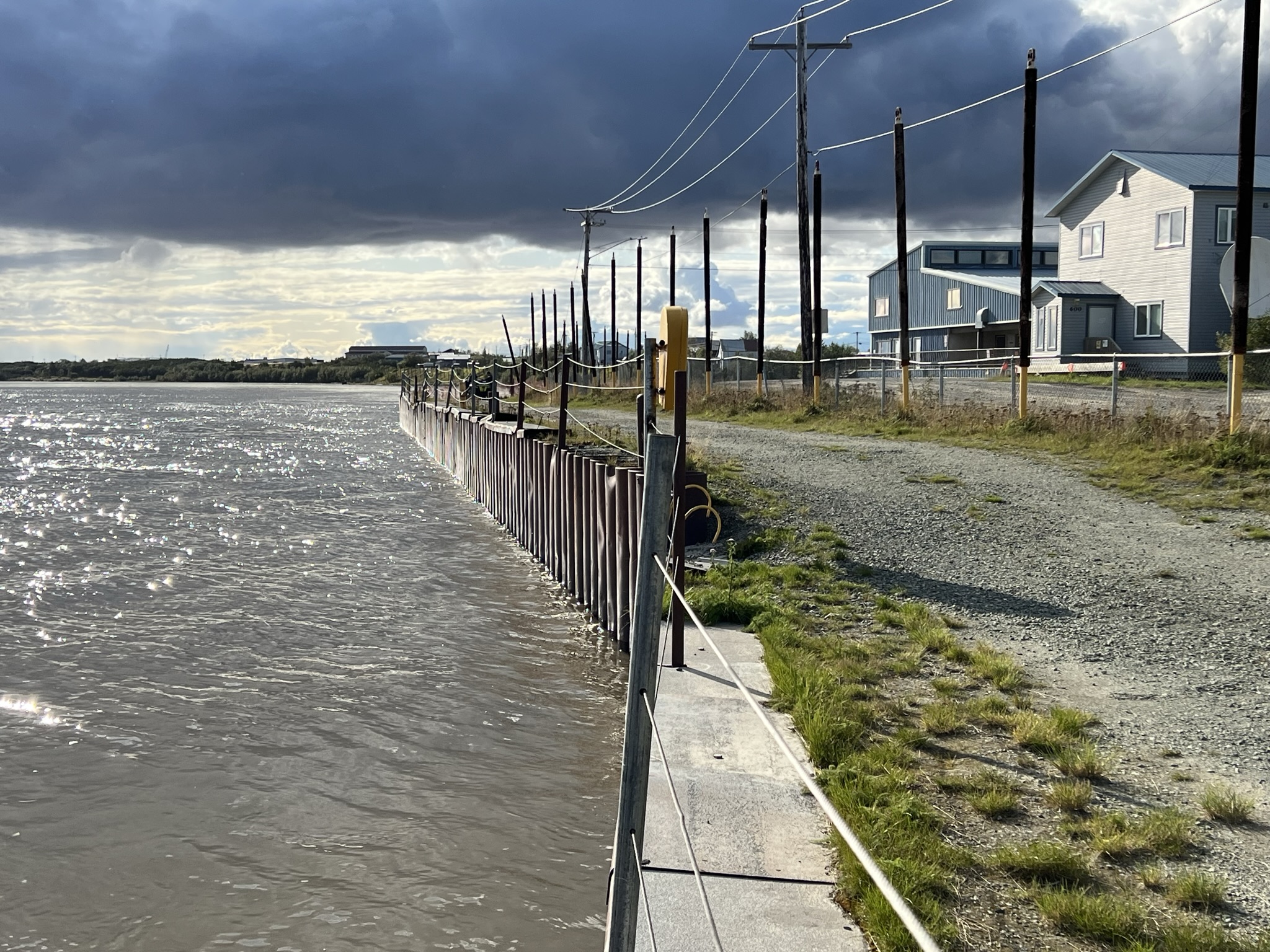
There are already several inches of snow on the ground in Fairbanks, but you won’t find any surrounding Vladimir Romanovsky’s house. Romanovsky, a permafrost expert and professor emeritus at the University of Alaska Fairbanks, keeps the ground shoveled.
“My house, it’s right on the boundary between permafrost and non-permafrost,” he said.
Snow is an insulator; it keeps the ground several degrees warmer than the air. And if there is permafrost below his house, he doesn’t want to risk it thawing, potentially cracking the foundation or creating other structural problems.
“That’s why, just in case, I am shoveling snow around the house to make the ground colder. If there’s some deeper permafrost there, that will prevent it from thawing,” Romanovsky said.
Permafrost is the frozen layer of ground on or just under the Earth’s surface found in polar regions. Romanovsky is part of a team of international scientists who are trying to understand how quickly it’s thawing.
As the climate warms due to human-produced carbon emissions, the Earth’s upper layers of permafrost are at risk of disappearing. The rate it thaws has enormous financial consequences for communities living above permafrost now. Those include Fairbanks, Utqiagvik and dozens of villages in western, northern and Interior Alaska.
The team modeled different scenarios of warming to see the effects on permafrost and published their findings in August in Proceedings of the National Academy of Sciences. In severe warming scenarios they found that more than 75% of Earth’s near-surface permafrost, 10-13 feet below ground, will be gone by the end of the century. Even in more moderate warming scenarios, more than half will disappear.
Based on the air temperature data they recorded, Romanovsky said we’re heading toward that severe warming scenario already.
“We’re kind of on the higher end of the predictions [based on] the real changes in temperature,” he said.
That means three-quarters of the world’s near-surface permafrost is set to vanish by 2100.
This has major implications for cold-climate regions like Alaska, where permafrost covers the majority of the state and thawing is already well underway. One of the biggest impacts is to the built environment.
Buildings, homes, roads, and other infrastructure need stable surfaces to remain sturdy. But when the ground beneath is literally melting, those surfaces start to sink and become unstable. This is already a major problem for rural Alaska communities built on permafrost — and it’s going to get worse.
Ilya Benesch is the Arctic construction manager for the Cold Climate Housing Research Center in Fairbanks, which does building research and answers housing design questions. He said the center is fielding more frequent permafrost-related questions.
“I get calls regularly, it’s one of those steady themes: ‘Hey, I’ve got a sinkhole in my yard. Hey, how do I level my home?’” Benesch said. Lately even: “Do you know anybody that’s a house mover?”
These calls are a sign that climate change is progressing, Benesch said. “I personally think there’s only going to be more of this,” he said.
Benesch, a journeyman carpenter by trade, said there are lots of strategies for building on permafrost, like using continuous steel or wood beams to build a structure that’s rigid enough to handle sinking in places. The constraint is always cost.
“With technology nowadays, we can make it work, but it’s going to be very, very expensive,” said Dr. Joey Yang is a civil engineering professor at UAA.
Yang studies solutions for building on thawing permafrost in places like Bethel, Nome and Utqiagvik. Homes in these areas are often built on adjustable foundations that can be modified as the ground shifts below. Roads and other infrastructure require thermosiphons, big pipes that use cold surface air — or sometimes, air conditioning units — to cool the ground below and keep it from moving.
Yang said as permafrost thaw continues, these solutions will become more crucial — and more costly.
“I think as the climate is going the direction it was predicted, this is just life as usual, we just have to deal with it,” he said.
Scientists say the only thing that could stop permafrost thaw is to significantly curb global carbon emissions to slow warming. But for now, climate change is already here, Yang said, and Alaskans are shouldering the bill.
Kavitha George is Alaska Public Media’s climate change reporter. Reach her at kgeorge@alaskapublic.org. Read more about Kavitha here.





